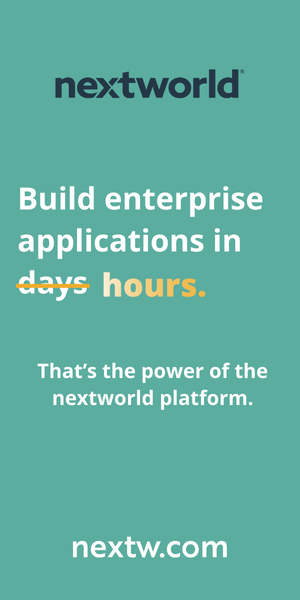The battle for talent is well documented in this issue of ERP Today and virtually all large employers are in a race against time to find, hire and onboard the staff they need to meet their obligations. Whilst there are plenty of tactics that employers can use to recruit, one overlooked pool of potential skills is a company’s own alumni – so called boomerang hires. In a break from the norm, Paul Esherwood sat down with regular ERP Today contributor, Emma Sinclair MBE, to talk about her business – EnterpriseAlumni – to find out why maintaining and maximising relationships with former employees could be the answer to the skills shortage

.
Reid Hoffman, infamous founder of LinkedIn, talked about alumni and lifelong relationships with former employees back in 2014. But no one digitalised it until recently…
“LinkedIn. Tesla. YouTube. Yelp. Yammer. SpaceX. What do all these companies have in common? They’re not just examples of innovation and financial success. All of them were founded by the alumni of a single company: PayPal. Lifetime employment might be over, but a lifetime relationship remains the ideal, and as the alumni of PayPal have demonstrated, it can be extremely valuable. Unlike the free agency model, the alliance can and should persist even after an employee’s final tour of duty.”
Why do alumni matter?
ES: Organisations devote a great deal of time and resources to onboarding new hires and retaining employees, but little effort and few resources go towards offboarding. Huge investment is made in recruitment, retention, learning and development, for example. Yet the day people leave, the departure process is typically marked with a ‘thanks, bye…’ And that’s pretty much it.
Not very inspiring!
It’s a big, missed opportunity as the business impact of positive offboarding is significant for recruiting, sales, marketing, and overall organisational value. Leave well, and you’ll feel inclined to advocate, buy from, evangelise or return to a former employer. Don’t, and there’s often a bitter aftertaste.
We all know this intuitively. Many of us stay in touch with former colleagues and when we need advice, a job, introductions, marathon sponsorship or a mentor, it’s those people we kept in touch with that we turn to. Companies need to do this at scale.
I think the last 21 months have changed large organisations and the way they address this challenge forever; they’ve been forced to be more flexible, compassionate, long term in their thinking and of course, more digital. Companies recognise the employee lifecycle should no longer end when people leave; and the concept of a lifelong relationship is therefore being better embedded in the employee experience.
Importantly, questions are being asked in the boardroom. Knowing how important people are, why don’t we treat them better? Knowing how competitive the job market is, why don’t we make sure we stay in touch and prioritise post employee engagement? Knowing alumni and their friends and family are consumers, why not treat former employees as we treat customers?
Leave the company and surely you should be upgraded to a customer vs ignored and forgotten?
ES: There’s a lot of talk about employee experience and customer experience. Alumni experience matters just as much, and as such, has swiftly become a c-suite issue. When Andrea Smith, a long time member of Bank of America’s executive management team and chief administrative officer, announced her retirement at the end of 2021, she simultaneously announced she was leading the formation of, and will chair, the Bank of America alumni network. That sort of appointment shows you just how seriously large companies take maintaining relationships with former employees in 2021.
Citi too has c-suite support. It is the CEO, Jane Fraser, who talks about the rich legacy that their alumni helped them build on their alumni home page. That network is a well-established treasure chest of development opportunities for the business, identified in the 90s by Richard Morrogh, former senior banker and now an advisor to the London Stock Exchange, who was the early sponsor of alumni initiatives.
Morrogh told me: “Many of our senior alumni had had long and varied careers with Citi. They had their own personal branding tied up in the success of ours. They wanted to help and stay connected with colleagues, past and present. We realised a more official network was needed to complement the existing informal ones and it worked from the get-go. The holy grail (for me) was business referrals. Alumni understood where Citi could help them, and they often had the vested interest and enthusiasm to help make sure any implementation ran smoothly. There was added pressure to perform but along with that came invaluable alumni support and insights too.”
And for alumni, an alumni network is a source of research, insights, perks, learning and community.
The formal Citi Alumni Network is now in its tenth anniversary year, led by Andrea Legnani who recently shared that Citi recruit 12 percent of annual hires from alumni saving on average $75,000 per recruit. With a workforce of 210,000 people, that’s a potential saving of almost $2bn: what CFO can afford to ignore impact like that?
Think about the average cost to hire a white-collar employee. Then think about the average time to productivity. And the odds of making a bad hire and the impact that has. Hire an alumni from your network and there’s no recruitment costs and they are productive faster as they know their way around. And they’re more likely to be a good fit as they know you and you know them. It’s no wonder ‘boomerang’ is the biggest buzz word in HR right now.
But it’s the great resignation, not the great boomerang, no?
ES: It’s both! As if the pandemic hasn’t put enough pressure on people and the organisations they work for, we have a new set of major challenges facing the workforce. Economic growth on the one hand, and a massive labour shortage on the other. Not to mention supply chain pressures, inflation and a very empowered workforce too.
The ‘boomerang’ employee became 2021’s newest and most impactful career trend and shows no signs of abating to combat the resignation pressures. Put simply, boomerangs who are familiar with both the company – and sometimes the role – are cheaper and easier than new hires. Who can afford to ignore this talent pool?
Yes, people are resigning in droves, but often for a career, role or company change. That’s a fertile treasure chest of people who might come back to you if you have invested in building, maintaining and maximising relationships.
I heard of an HR director who is frequently asked, ‘What did you do during the pandemic for the people who worked for you?’. People who you are trying to recruit are deciding whether to join based on the values they think run through the company. This is where alumni also becomes interesting. It shows people the values which your business prioritises and gives them a sense of what they can expect when they are with you. And across all generations too.
93 percent of millennials move for a promotion. With such a mobile workforce, making it easy for everyone to return is high on corporate agendas. Even Aviva’s current HR Director, Darren Cornish, is a boomerang hire and proudly advocates returners via their alumni network.
Is there still that family business-esque ‘maintain a relationship’ mentality in 2022? Isn’t the corporate world a bit more brutal?
ES: Yes there is, everywhere! Marks and Spencer is a brilliant example of wanting to maintain that connection, having launched the ‘M&S Family Alumni Network’ a few years ago. Its goal is to harness the passion of its alumni for the brand as well as create a community that helps each other and helps M&S to transform. Vast and global in its reach, its community of former colleagues remain its most passionate advocates and constructive critics.
Helping them to stay ‘part of the family’ and giving them a chance to continue to contribute to the business taps support for everything from M&S’ recruitment pipeline, to mentoring, to candid feedback on its products and services. Good for business and good for alumni.
Chalhoub Group, the largest retail operator in the Middle East with more than 12,000 employees in 14 countries, has embedded alumni in its corporate culture. It is also supported by the Chalhoub family, who still own the business. They have regional partnerships with luxury brands from L’Occitane to Sephora, Louis Vuitton to Lacoste and more. Staff have access to a generous discount and perks programme – which they’ve extended to alumni.
How can companies get started with an Alumni programme and what’s the first steps to engaging with former employees?
ES: Time spent on alumni initiatives should be strategic and add value to the business, rather than managing changes of addresses and email details on a spreadsheet. If managing, leveraging, engaging and innovating around alumni is not your core business, bring in the right partner. When Coca-Cola want to make refreshing beverages, they look internally. When they needed an alumni network, they came to us!
Platforms exist to take the hassle out of building and growing an alumni community. Technology can do the hard work: tracking, engaging and understanding former employees – but it’s not enough. It represents about 50 percent of the work required. An alumni platform without an engagement strategy gets stale. A platform solely focussed on a transactional relationship with alumni does not thrive.
Find the right senior sponsor who knows that maintaining relationships is good for business. Typically, alumni networks are CEO or CMO sponsored, with HR as a key stakeholder. Build a stakeholder group which brings together various departments, and consider not only what the company wants (sales, recruitment), but what opportunity and community you can offer to alumni. It has to be a give and take.
Finally, think about who your alumni are. Is it just former employees or also contingent workers, freelancers, contract, graduates or seasonal workers? From my perspective, an alumni community should be inclusive. Why refuse entry to someone who only worked for you for three months whilst at college, or someone part-time, especially if they were a good leaver?
The last major part of the employee lifecycle, to escape technological disruption, finally went digital. We’ve been the drivers of a new market sector marrying the competitive advantage corporates need and want with the community and opportunity alumni value.
People used to have jobs for life. That no longer exists, but we can give them relationships for life. And I for one am enjoying the ride!
We’ve been the drivers of a new market sector marrying the competitive advantage corporates need and want with the community and opportunity alumni value






